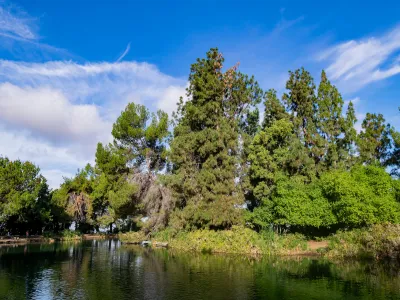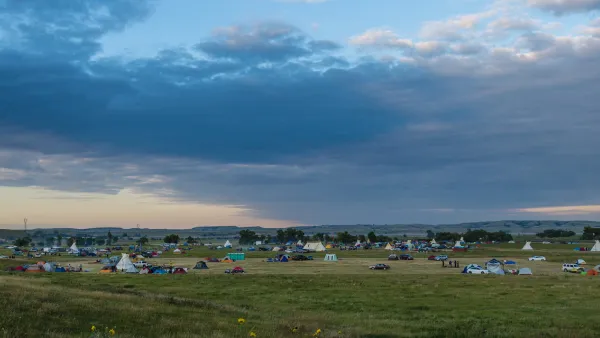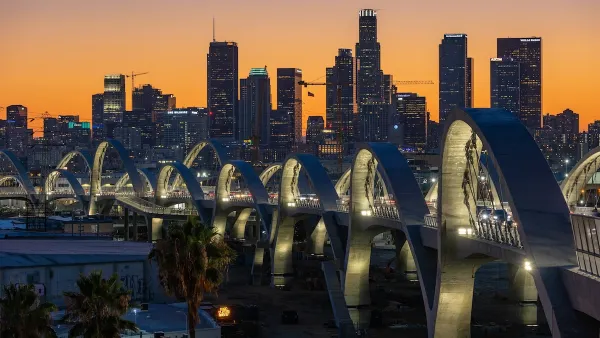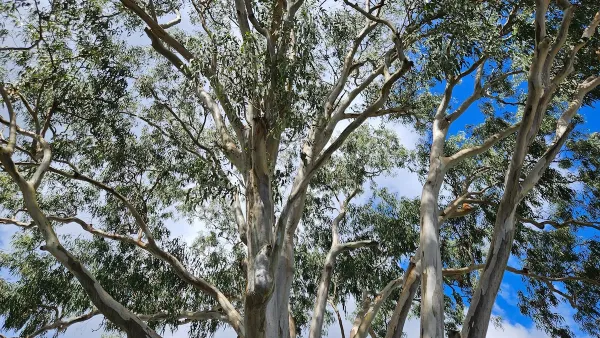Ary Amaya, a UCLA graduate student, leads an Indigenous-led reforestation effort in Los Angeles, integrating cultural practices and ecological restoration across 27 acres to promote Indigenous sovereignty and sustainable land management.

Ary Amaya, a graduate student at UCLA, is at the forefront of an Indigenous-led reforestation effort in Los Angeles. Standing amidst a landscape she has helped restore, Amaya explains the cultural and ecological importance of the native trees and plants that make up a "food forest." As reported by Madeline Adamo, this project is part of the Chief Ya’anna Regenerative Learning Village, a 12-acre area dedicated to the Gabrielino-Shoshone Nation of Southern California.
Central to this reforestation initiative is the Anawakalmekak International University Preparatory of North America, a community-based charter school that serves Indigenous students from across the Americas. Amaya, who has been an educator at the school since 2021, integrates Indigenous knowledge systems into the scientific curriculum, drawing from her own heritage and upbringing in Nayarit, Mexico. Her dual roles at UCLA and Anawakalmekak allow her to bridge academic research and community engagement.
Amaya's efforts extend to Ernest E. Debs Regional Park, bringing the total reforested area to 27 acres. She mentors a group of high school students, the "Ketsal Youth Research Scientists," who conduct ground observations and remote sensing to study the ecological impact of their work. This hands-on approach not only educates the youth but also reaffirms the importance of Indigenous sovereignty and self-determination in ecological restoration.
Supported by her graduate advisor, Elsa Ordway, and collaborating with Gabrielle Crowe and Minnie Ferguson, Amaya's work underscores the value of integrating Indigenous perspectives into environmental science. This initiative aligns with UCLA's broader commitment to inclusive excellence and community engagement, aiming to elevate Indigenous knowledge and voices in both academic and local contexts.
FULL STORY: Ary Amaya is 27 acres into an Indigenous-led reforestation of L.A. She’s far from done

National Parks Layoffs Will Cause Communities to Lose Billions
Thousands of essential park workers were laid off this week, just before the busy spring break season.

Retro-silient?: America’s First “Eco-burb,” The Woodlands Turns 50
A master-planned community north of Houston offers lessons on green infrastructure and resilient design, but falls short of its founder’s lofty affordability and walkability goals.

Delivering for America Plan Will Downgrade Mail Service in at Least 49.5 Percent of Zip Codes
Republican and Democrat lawmakers criticize the plan for its disproportionate negative impact on rural communities.

Test News Post 1
This is a summary

Test News Headline 46
Test for the image on the front page.

Balancing Bombs and Butterflies: How the National Guard Protects a Rare Species
The National Guard at Fort Indiantown Gap uses GIS technology and land management strategies to balance military training with conservation efforts, ensuring the survival of the rare eastern regal fritillary butterfly.
Urban Design for Planners 1: Software Tools
This six-course series explores essential urban design concepts using open source software and equips planners with the tools they need to participate fully in the urban design process.
Planning for Universal Design
Learn the tools for implementing Universal Design in planning regulations.
EMC Planning Group, Inc.
Planetizen
Planetizen
Mpact (formerly Rail~Volution)
Great Falls Development Authority, Inc.
HUDs Office of Policy Development and Research
NYU Wagner Graduate School of Public Service





























